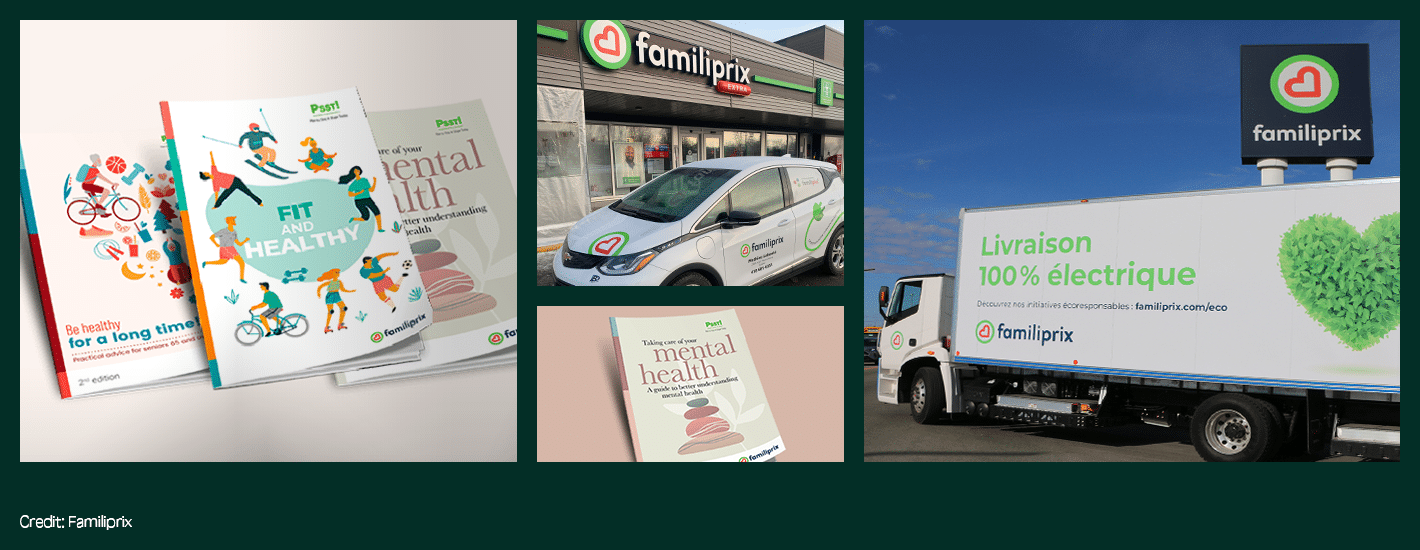Nicole Rycroft, Founder and Executive Director of Canopy, a Vancouver-based non-profit that harnesses the power of the marketplace to help protect the world’s endangered forests, speaks about the environmental role of businesses, creative solutions, and the rare spirit bear.
In our “Conversations with Green Champions,” Rolland President Philip Rundle asks sustainability-minded organizations about their approach to environmental responsibility.
Nicole Rycroft, Founder and Executive Director of Canopy, a Vancouver-based non-profit that harnesses the power of the marketplace to help protect the world’s endangered forests, speaks about the environmental role of businesses, creative solutions, and the rare spirit bear.
Canopy’s mission and reach
- Canopy works with business leaders, scientists and decision-makers to protect forests and create sustainable supply chains.
- Canopy helps shape the purchasing practices of 750 of the forest industry’s largest customers, from book publishers to printers.
- Through the CanopyStyle campaign, major players in the fashion industry have pledged to end sourcing fabrics from ancient and endangered forests.
Q: On a scale of one to ten, what is the current risk level for the world’s old growth forests?
A: Risk is at ten. On the same one to ten scale, I would match that with my hope for developing a solution for large-scale conservation of old-growth forests at ten.
Q: Why are you hopeful in the face of high risk?
A: Strengthening momentum in the marketplace. Large corporate paper customers want to see solutions, and to contribute to forest conservation and climate solutions. Their actions include sourcing papers that help them meet their own sustainability goals.
Marketplace support has translated into breakthroughs, like the Great Bear Rainforest1 agreement finalized in 2016, which conserves a 6.5 million-hectare landscape. Fifteen years ago, 90% was open for logging, and now 85% is formally protected or off-limits from logging – and parallel to that is a vibrant sustainable forest products industry. Cause for hope!
Q: What’s behind this support?
A: Large publishers, printers, and fashion brands are compelling players in the supply chain and do not want to contribute to the loss of the world’s remaining ancient and endangered forests. Their engagement has helped sensitize the paper and forestry industry, leading it to change practices and prioritize solutions on the ground and the development of more sustainable products such as papers made with recycled fiber.
Q: How do you define “sustainable supply chain”?
A: With paper, it means no sourcing from or impacts on ancient and endangered forest ecosystems, high post-consumer recycled content and, if there is virgin wood fiber, it is FSC®2certified.
Q: How did CanopyStyle3 grow support from five fashion brands in 2013 to 100 in 2017?
A: It reflects Canopy’s model of change, our talented team, strong partnerships with committed brands and designers – and a bit of magic. Innovation is woven into the fabric of the fashion industry and CanopyStyle appealed to that.
That industry has been dealing with social issues such as child labor, and there are teams at most brands addressing social and environmental issues, so it is both sensitized and responsive.
Great partners stepped up on the campaign and have been incredible advocates – from industry gatekeepers like Eileen Fisher, H&M and Zara, to Stella McCartney among luxury trendsetters.
Q: What environmental issue captured the imagination of the fashion world?
A: Every year 120 million trees disappear into rayon and viscose fabrics. This has impacted Canada’s boreal forests, and the Indonesian and Amazon rainforests. The number is expected to double in next decade – unless sourcing changes.
There’s a sense with this issue that we can build a fence at the top of the cliff, rather than a hospital at the bottom. That’s very different from most environmental issues, where we must mitigate the impacts of an entrenched and unsustainable supply chain. This has engaged fashion brands – they see an opportunity to shift in a sustainable direction before we drive off the cliff.
Q: What is the role of print communications at Canopy?
A: Paper has an important role in modern society and Canopy has a role consistent with our mission as a conservation organization. We use 100% post-consumer recycled paper. This also showcases what is possible with sustainable paper. On a personal note, I still prefer to write longhand in a notebook!
Q: What has changed most, environmentally, since Canopy started at a kitchen table in 1999?
A: Environmental awareness is much higher. We’ve also seen a parallel increase in climate change and impacts on the natural world and weather. We now see environmental refugees!
We’ve also seen an incredible shift in leadership, toward companies. Most of the bold leadership that’s taking place globally around sustainability is at the intersection where conservation organizations work with the private sector.
The Great Bear Rainforest agreement is a fantastic example of what was unthinkable in 1999, when the situation was unsustainable environmentally and socially. Large international and domestic companies sent a clear message to the forest industry and the BC government: they did not want to source from spirit bear habitat4 or unsustainable logging practices.
So, negotiations started.
Fast forward to February 2016 and the agreement. In addition to 85% of the region being formally protection or off-limits to logging, the agreement includes a shift to ecosystem-based management with a light touch, sustainable forest management on land available for logging, and recognition of First Nations on a government-to-government basis. That’s a creative solution.
Q: Do you see Canopy as a green champion?
A: Yes. Protecting endangered forests is what gets me out of bed every morning. We work with great companies and brands that are green champions, too. I put Rolland in the forefront among paper producers because of its high post-consumer recycled content and commitment not to source from ancient and endangered forests.


